Some of the world’s deadliest snakes are aggressive and quick-to-strike, while others pack potent venom but will only bite as a last resort.
Here’s a look at the nine deadliest snakes, fearsome creatures for their stealth as well as their poison.
9. Black Mamba (Dendroaspis polylepis)
Region: Central, Eastern Africa
Average length: 7 to 9 feet (2 to 3 meters)
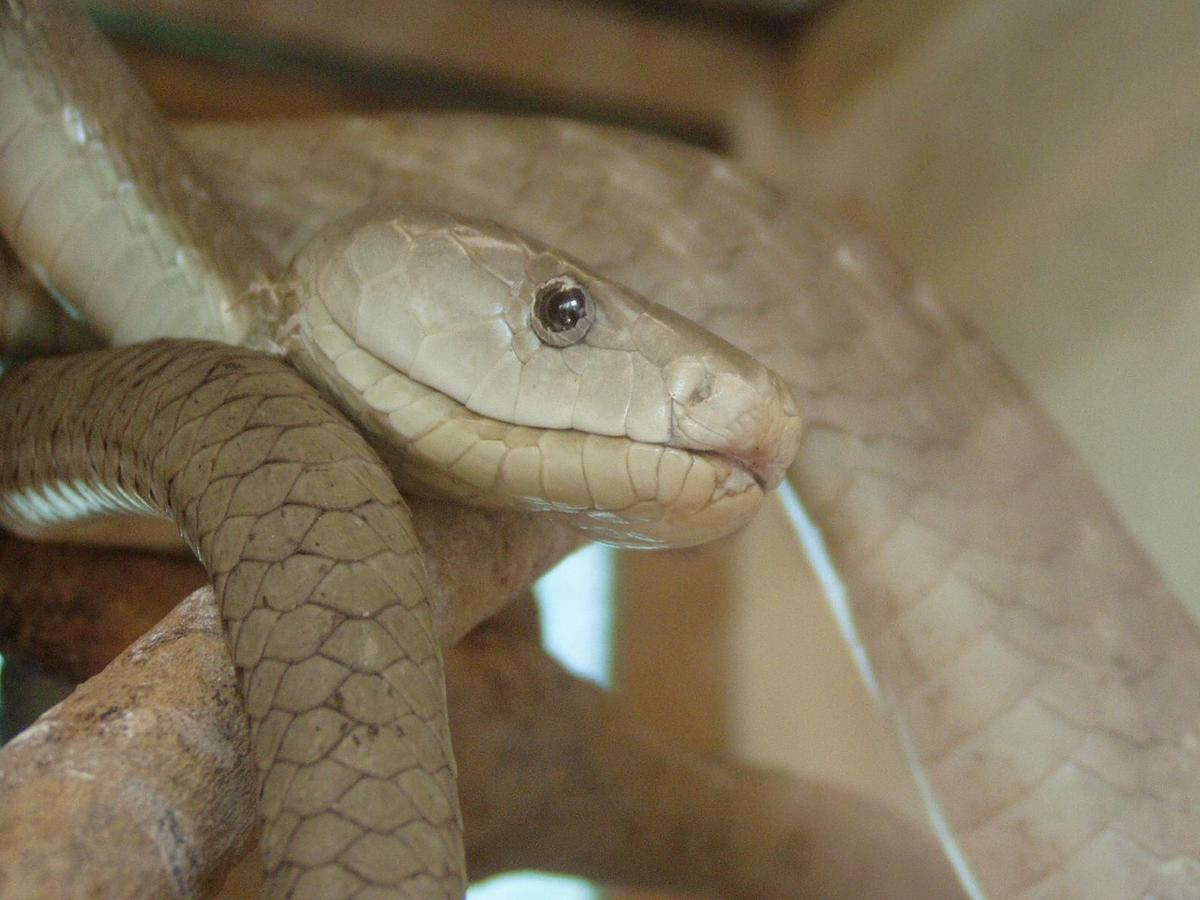
(Kat Spence/Wikimedia Commons)
The black mamba’s venom can kill a human in half an hour to two hours if the victim isn’t treated with an anti-venom injection. Early symptoms include drowsiness, neurological problems, paralysis, and trouble breathing.
This snake is aggressive and fast-moving. It dwells in trees and scrub. The black mamba isn’t actually black. It varies in color from olive to brown.
8. Terciopelo (Bothrops asper)
Region: Southern and Eastern Mexico, Central America, Northern Colombia and Ecuador
Average length: 4.5 to 6 feet (1 to 2 meters)
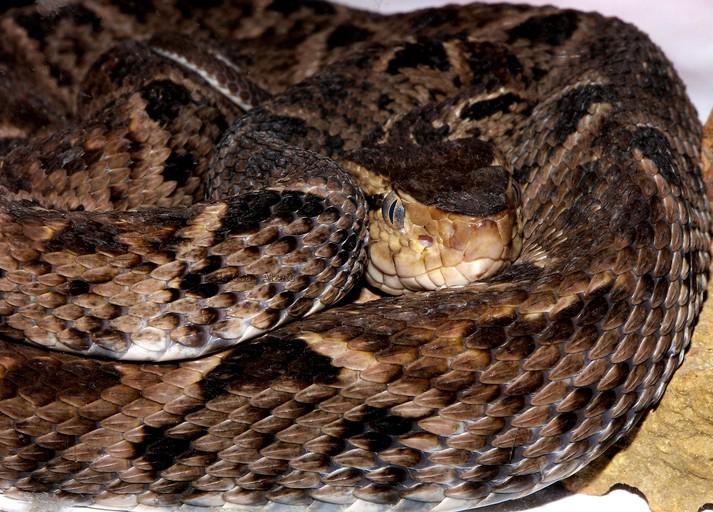
(Esteban Alzate/Wikimedia Commons)

(Juan Camilo Mora/Wikimedia Commons)
The Terciopelo’s venom attacks the blood, causing clots that are deadly. It has many names, varying from region to region, including barba amarilla, macagua, yellow beard, yellow chin, and fer-de-lance.
Offspring grow inside the female’s body, and a single snake can give birth to up to 100 offspring.
7. Boomslang (Dispholidus typus)
Region: Central, Southern Africa
Average length: 4 to 5 feet (1.2 to 1.5 meters)
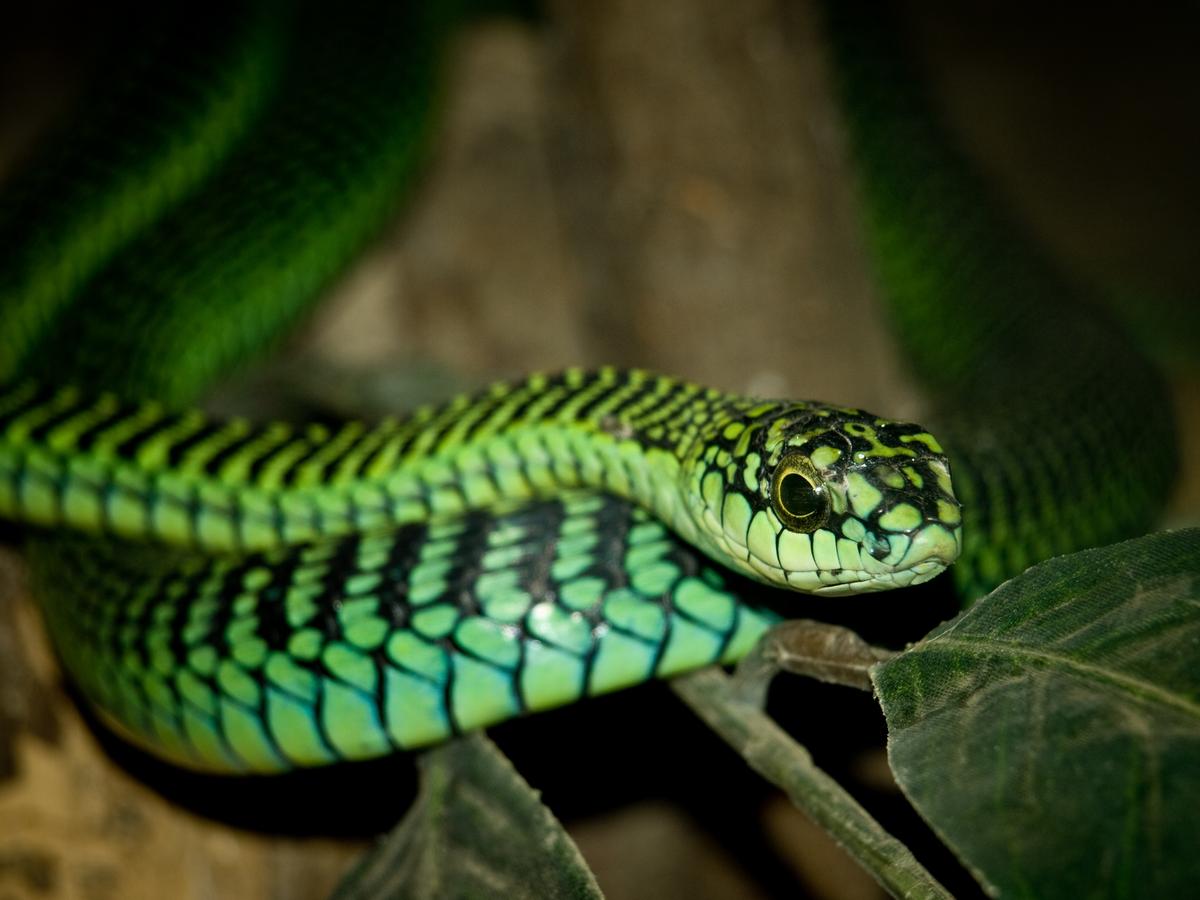
(William Warby/Wikimedia Commons)
This snake mimics a tree branch when it hunts, extending itself, nearly motionless from a tree. The boomslang is a rare example of a rear-fanged snake that can kill humans, as rear-fanged snakes usually deliver small amounts of venom slowly.
The boomslang typically only bites if handled. It dwells in a variety of ecosystems, though it tends toward moist areas rather than desertous regions, living in low-lying shrubs and short trees. Its lifespan is about eight years.
6. Eastern Tiger Snake (Notechis scutatus)
Region: Parts of Southern and Eastern Australia
Average length: 3 to 6 feet (1 to 1.8 meters)
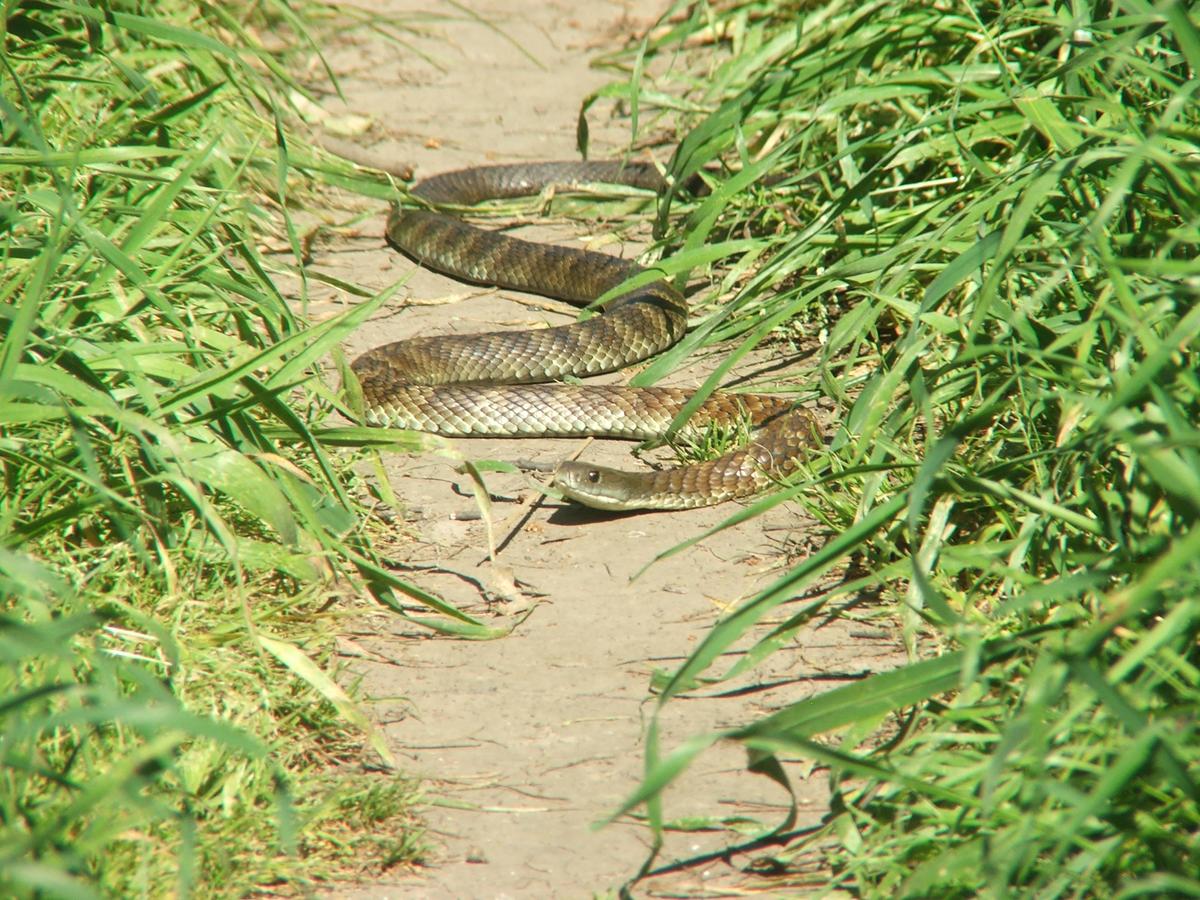
(Wikimedia Commons)
The eastern tiger snake’s venom is neurotoxic, attacking the central nervous system. It also causes muscle damage and causes blood clots. Disintegrating muscle tissue, it can lead to kidney failure.
It will only bite as a last resort. When under duress, it will first flatten its neck and raise its head to intimidate its foe. It will then bluff strike, hissing or barking at the same time.
The tiger snake is most common in Tasmania, Australia. As many as 26 juvenile snakes have been found hibernating in the same place. The tiger snake is prone to wandering; it generally won’t stay in the same place longer than 15 days.
5. Saw-Scaled Viper (Echis carinatus)
Region: Central and south-western Asia, from India, up through Afghanistan and into eastern Iran
Average length: 1 to 2 feet (0.4 to 0.6 meters)
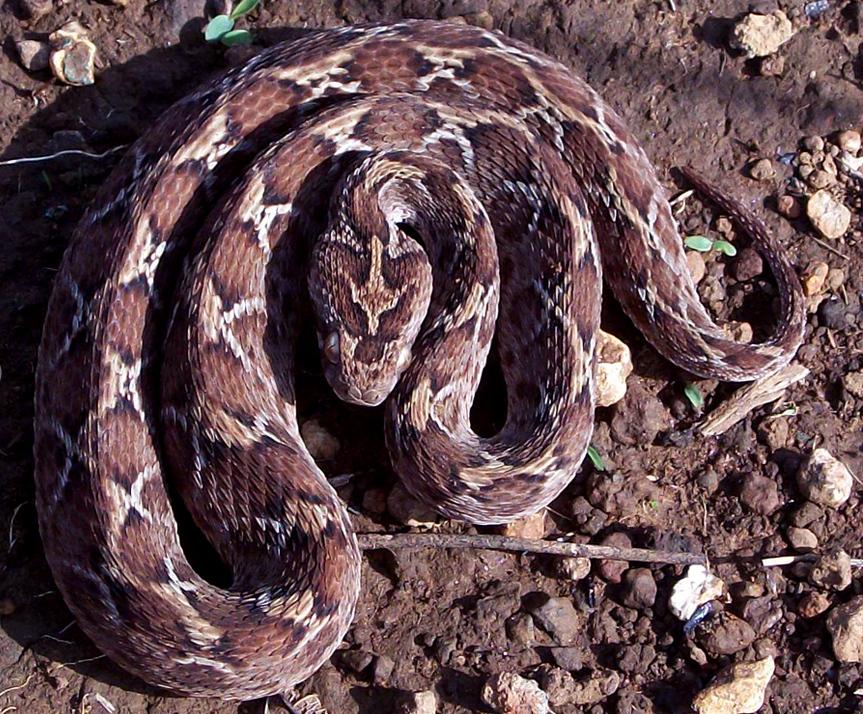
(Wikimedia Commons)
This snake is very aggressive, meaning it bites often. Though its venom kills less than 10 percent of untreated victims, it is believed to have killed more humans than any other snake in the world because it bites so often.
4. Banded Krait (Bungarus fasciatus)
Region: South-eastern Asia, from Indonesia up to southern China and through to eastern India
Average length: 5.5 feet (1.6 meters)
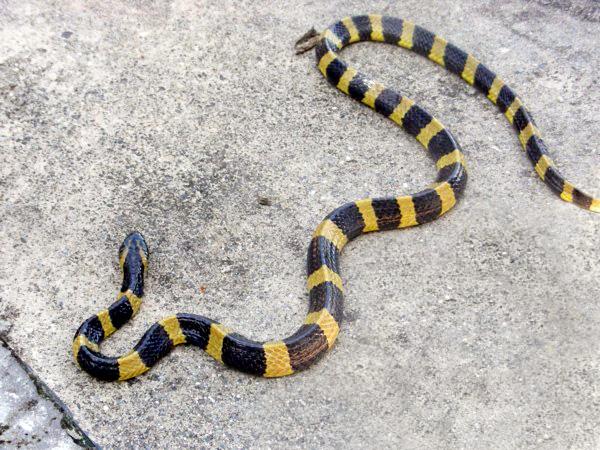
(Wikimedia Commons)
The banded krait’s venom induces paralysis, attacking the central nervous system. It was called the “five-step snake” during the Vietnam War because it was said that a person would die within five footsteps after being bitten. In fact, it can take eight hours or more for the venom to kill.
A pencil-sized banded krait killed snake researcher Joe Slowinski in Burma in 2001.
This snake prefers damp places, open country, grasslands, crops, or low sparse jungles.
3. King Cobra (Ophiophagus hannah)
Region: East and Southeast Asia
Average length: 10 feet (3 meters)

King Cobra (Shutterstock)
The king cobra is the largest venomous snake in the world, growing up to 18.5 feet in length and to a weight of 45 pounds. It can inject its prey with large amounts of venom, which can kill a human within half an hour. The initial symptoms are mostly neurological.
This snake is a good swimmer and can be found mainly near lakes and streams. It is active during the day and spends most of its time on the ground, though it spends some time in trees, water, and bushes.
2. Coastal Taipan (Oxyuranus scutellatus)
Region: Northern Australia, Southern Papua New Guinea, and Southern Indonesia
Average length: 6.5 feet (2 meters)

(Wikimedia Commons)
This snake’s bite is lethal in more than 80 percent of cases and its venom can kill a human victim within half an hour. The victim first experiences drowsiness, blurred vision, convulsions, and trouble breathing.
1. Inland or Western Taipan (Oxyuranus microlepidotus)
Region: Inland Australia
Average length: 6 feet (1.8 meters)

Inland Taipan (Shutterstock)
The venom in one bite from this snake is enough to kill 100 grown men or more than 200,000 mice. Also called the “fierce snake,” the Inland Taipan is the most venomous snake in the world. Luckily, cases of humans being bitten by the snake are rare, and anti-venom treatments have been successful in most cases.




